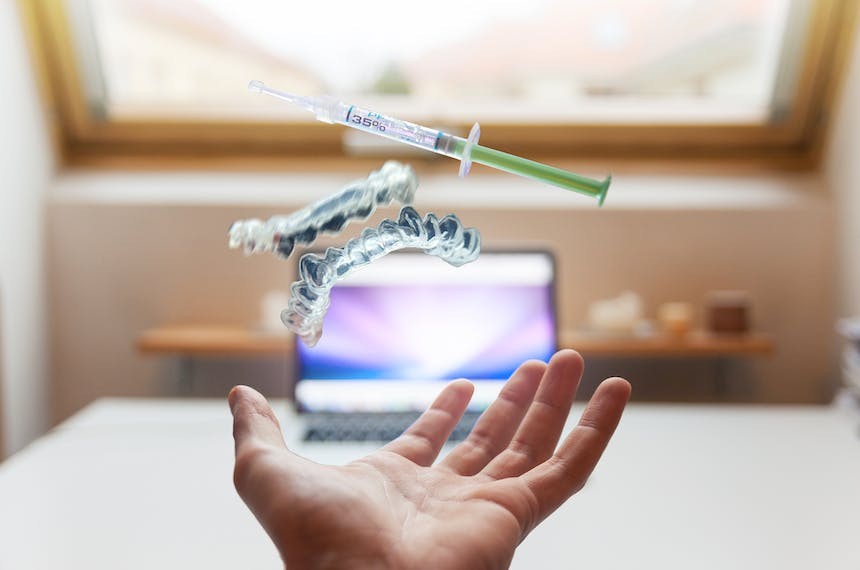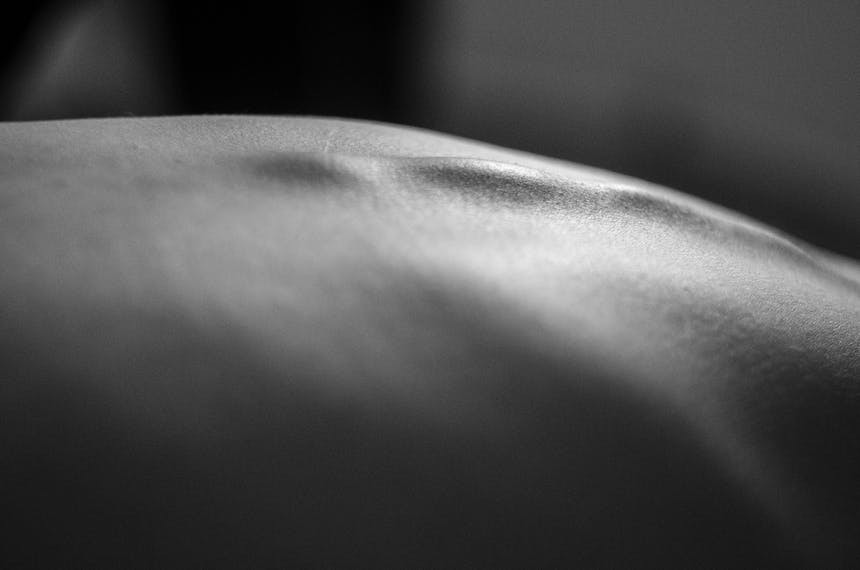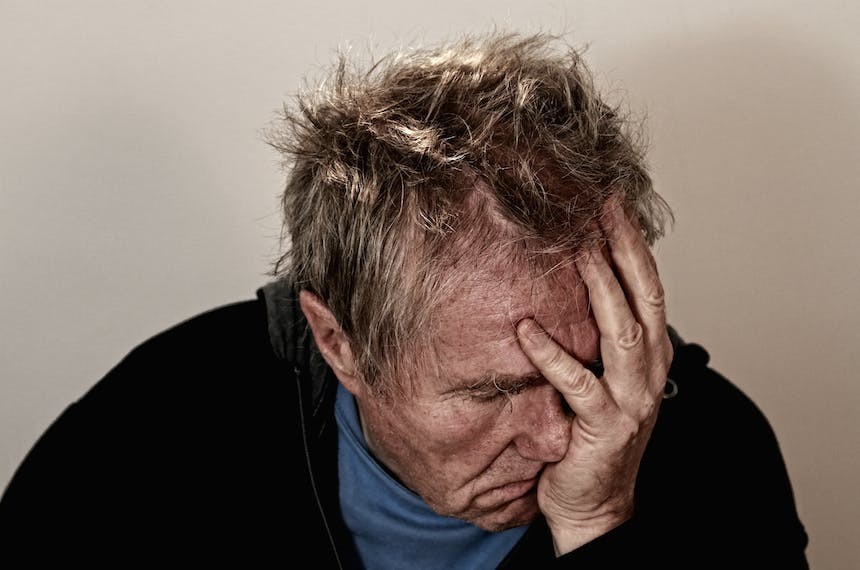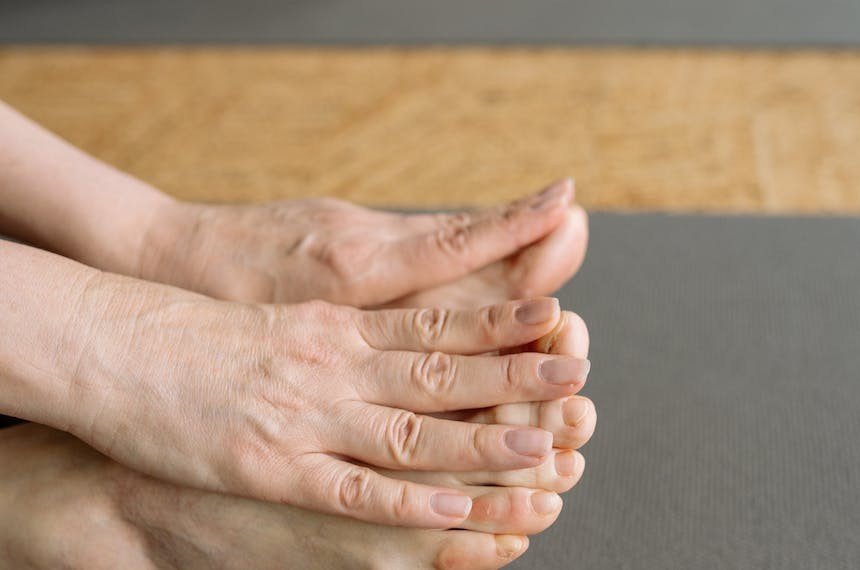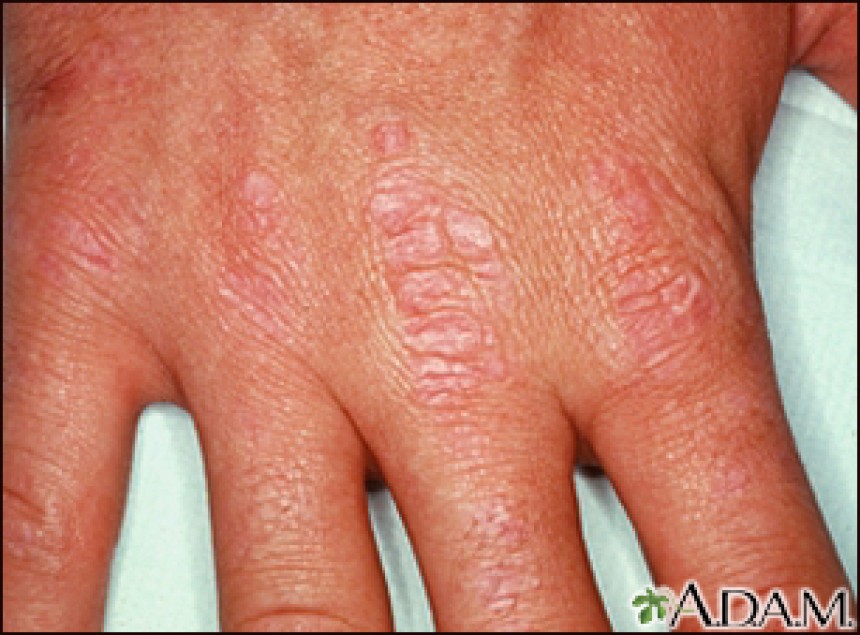
Dermatomyositis
Dermatomyositis (DM) is an inflammatory disorder with muscle weakness and characteristic skin manifestations. Treatment aims to improve muscle strength and resolve skin issues. Glucocorticoids are the initial therapy, followed by tapering. Glucocorticoid-sparing agents like azathioprine or methotrexate can be considered if steroids are ineffective. Skin symptoms can be managed with sun protection, topical treatments, and antihistamines. Intravenous immune globulin (IVIG) may help in severe cases with life-threatening weakness or dysphagia.
Dermatomyositis (DM): Introduction and Clinical Features
Dermatomyositis (DM) is an idiopathic inflammatory disorder, characterised by the shared features of proximal skeletal muscle weakness and a variety of characteristic skin manifestations. The skin lesions include gottron's papule, facial erythema, shawl sign and heliotrope eruptions. (1, 2)
Goals and Initial Treatment for DM
The goals of treatment of DM are to improve muscle strength, to avoid the development of extramuscular complications and resolution of cutaneous manifestations. Glucocorticoids are the cornerstone of initial therapy for DM. Glucocorticoids are usually initiated as either prednisolone (1 mg/kg per day for approximately 6 weeks) or for ill patients; methylprednisolone (1000 mg per day for three days, followed by prednisolone tapering doses (based on clinical improvement and improvement in muscle enzymes) for nearly 6 weeks).
Glucocorticoid Administration and Tapering
Tapering is required over about 26 weeks to reach a daily dose of 5 mg depending on response improvement. Most patients discontinue glucocorticoids at 9 to 12 months. Also, patients require prophylaxis against osteoporosis and opportunistic infections with trimethoprim/ sulfamethoxazole (TMP/SMZ) 160/800 mg while on steroids. (3, 4, 5, 6).
Glucocorticoid-Sparing Agents and Hydroxychloroquine
If no response to steroids, then glucocorticoid- sparing agents may be considered. They include azathioprine (starting at 50 mg/day), or methotrexate (starting at 15mg/week). They are usually given for about 6 months based on patient's improvement condition. Also, hydroxychloroquine (200 to 400 mg daily) is effective in controlling skin manifestations. (7)
Therapy for Cutaneous Disease
Therapy for cutaneous disease is usually indicated due to the presence of severe pruritus and patient distress over the appearance of skin lesions. Liberal use of sunscreens and sun- protective clothing, is important to protect skin from Sun. Also, topical quinacrine, topical tactolimus could be effective. Pruritus responds to topical menthol, camphor, antihistaminic creams, or lidocaine. (8, 9)
Management of Severe Weakness and Dysphagia
Also, patients with severe life- threatening weakness or severe dysphagia at risk for aspiration may benefit from the addition of intravenous immune globulin (IVIG) to initial treatment with glucocorticoids. (10)
References
1-Winkelmann RK, Mulder DW, Lambert EH, et al. Course of dermatomyositis-polymyositis: comparison of untreated and cortisone-treated patients. Mayo Clin Proc 1968; 43:545.
2-Johnson NE, Arnold WD, Hebert D, Gwathmey K, Dimachkie MM, Barohn RJ, et al. Disease course and therapeutic approach in dermatomyositis: a four-center retrospective study of 100 patients. Neuromuscul Disord. 2015;25:625–31
3- Aggarwal R, Rider LG, Ruperto N, Bayat N, Erman B, Feldman BM, et al. 2016 American College of Rheumatology/European League Against Rheumatism criteria for minimal, moderate, and major clinical response in adult dermatomyositis and polymyositis: an international myositis assessment and clinical studies group/Paediatric Rheu. Ann Rheum Dis. 2017;76:792– 801.
4- Cavagna L, Monti S, Caporali R, Gatto M, Iaccarino L, Doria A. How I treat idiopathic patients with inflammatory myopathies in the clinical practice. Autoimmun Rev. 2017;16:999–1007
5- Raghu P, Manadan AM, Schmukler J, Mathur T, Block JA. Pulse dose methylprednisolone therapy for adult idiopathic inflammatory myopathy. Am J Ther. 2015;22:244–7.
6-van der Goes MC, Jacobs JWG, Boers M, Andrews T, Bom-Bakkers MAM, Buttgereit F, et al. Monitoring adverse events of low-dose glucocorticoid therapy: EULAR recommendations for clinical trials and daily practice. Ann Rheum Dis. 2010;69:1913–9.
7- Vleugels RA, Callen JP. Dermatomyositis: current and future therapies.Expert Rev Dermatol 2009; 4:581.
8-Dalakas MC, Illa I, Dambrosia JM, et al. A controlled trial of high-dose intravenous immune globulin infusions as treatment for dermatomyositis. NEJM. 1993;329:1993–2000.
9-Drake LA, Dinehart SM, Farmer ER, et al. Guidelines of care for dermatomyositis. American Academy of Dermatology. J Am Acad Dermatol 1996; 34:824.
10- Iaccarino L, Bartoloni E, Gerli R, Alunno A, Barsotti S, Cafaro G, et al.Drugs in induction and treatment of idiopathic inflammatory myopathies. Auto Immun Highlights. 2014;5:95–100.

